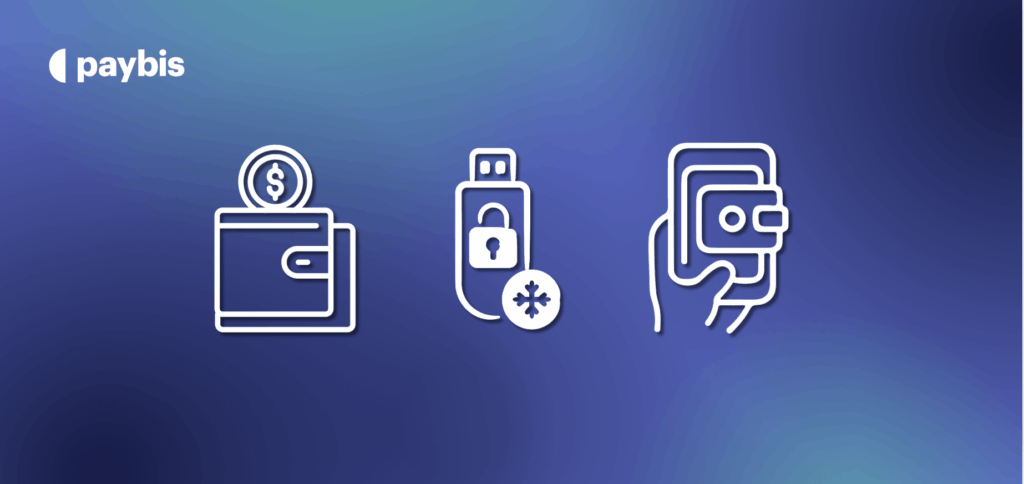How to Choose the Best Cryptocurrency to Invest In
Cryptocurrencies have become super popular, with reports stating that an average of 28% of American adults, or as many as 65.7M people, own cryptocurrency in the U.S. today due to its many benefits in terms of returns, passive income, and investment diversification.
However, entering the crypto markets takes time, knowledge, understanding of crypto investment strategies, and experience, particularly when we consider the sheer amount of cryptos today and the pace at which digital assets evolve.
To help shed more light, we’ll explain the key factors to look into before buying cryptos and how to use online tools to analyze the performance of individual cryptos both at present and in the foreseeable future.
NOTE: This article aims to provide an educational background on considering crypto acquisition, rather than any investment advice. Everyone has a unique financial situation, so crypto investment objectives should be approached individually and with specialized knowledge.
Table of contents
Key Factors to Consider When Choosing a Cryptocurrency
Starting anything new means having to learn at least the very basics, and so it’s true for getting started with cryptocurrencies. Most beginners are drawn to the appeal of digital assets due to their accessibility, decentralization, availability, and possible returns.
Of course, having experience with investment in traditional finance helps, but investing in cryptos is much different considering their highly speculative nature. Beginning with high-value volatility, regulatory uncertainties, massive community sentiment influence, and ending with a plain lack of reliable valuation metrics.
It’s crucial to know how to identify valid projects to avoid scams and rug pulls when developers abandon a project after collecting investor funds. Like the infamous Squid Game Token (SQUID) rug pull, which shot up over 2,300% before its developers disappeared into the wind, leaving investors high and dry.
To better understand the factors that can influence any cryptocurrency trading, let’s define them one by one, and explore what implications they may have.
1. Understanding Metrics: Market Capitalization & Trading Volume
If you’re wondering how to know which crypto to buy, market capitalization (market cap for short) is one of the main metrics you should look for. It calculates the value of a single cryptocurrency by multiplying its current price by the total circulating supply.
To break it down a bit, a high market cap often means a well-established crypto project with broader adoption and lower volatility risk. In contrast, tokens with low market cap can signify new projects that are more susceptible to price swings and manipulation.
Trading volume is another important metric that shows the total value of any cryptocurrency traded over a given period. Just like in the case of evaluating market cap, a high trading volume usually means a strong market interest and liquidity, while a low trading volume can lead to price slippage and difficulty exiting positions.
For new investors, sticking with cryptocurrencies that have both a high market cap and high trading volume is the best start. Consider these tracking websites where you can check the latest info on market cap and trading volumes:
2. Researching Background: Crypto White Paper & Use Case
A year ago, over 13K cryptocurrencies were reported in March 2024. That’s why sifting through up and emerging crypto projects is extremely difficult as it requires some good old research, a process which gets overlooked too often, resulting in underperforming projects or even scams.
One of the first things you should start with is crypto whitepapers. Essentially, it’s a public document often shared online on official crypto websites that outlines a cryptocurrency project’s goals, technology, and development roadmap.
Any credible whitepaper will likely involve topics on the key problem an individual project seeks to solve, how it utilizes blockchain technology, what are its unique features, and sometimes, the names of the developers working on the project.
Additionally, looking at a project’s real-world use cases can also provide considerable information. Some cryptos act as payment methods, while other cryptocurrencies power smart contracts, decentralized applications (DeFi applications), or non-fungible tokens (NFTs), rather than relying on community hype.
3. Reviewing Historical Data & Trends
Adoption and growth are crucial in assessing any crypto project, new or old. While it’s true that cryptocurrencies are defined by volatility and constant short-term changes, historical data can offer invaluable insights into any cryptocurrency’s performance over a chosen period of time.
Reviewing the market cycles, regulatory changes, and broader economic trends can help identify patterns, volatility levels, and resilience during downturns of any crypto.
Let’s take Bitcoin and Ethereum as an example. These two major cryptos have shown undeniably strong long-term growth despite multiple crashes, aided by robust technological backing and further development to adapt and survive in changing markets.
4. Considering Government Regulations
Ever since Bitcoin first emerged in 2009, kickstarting the rapid growth and advancement of digital assets, governments have started working on policies and regulations in an effort to help control the skyrocketing power of cryptocurrency in a highly unregulated environment.
For example, in the US, the Securities and Exchange Commission (SEC) has classified some cryptocurrencies as securities, which basically means that they have to comply with strict securities laws.
One of the main obstacles of cryptocurrencies is that, unlike traditional financial products, most cryptocurrencies aren’t protected by the Securities Investor Protection Corporation (SIPC) or the Federal Deposit Insurance Corporation (FDIC). What this essentially means is that if an exchange collapses, investors could potentially suffer greater losses compared to traditional investments.
The best way to avoid these risks is to use globally recognized, trusted crypto exchange platforms like Paybis, Coinbase, or Kraken that comply with financial regulations on Know Your Customer (KYC) and Anti-Money Laundering (AML) compliance to buy Bitcoin or other cryptos safely.
5. Factoring Social Sentiment
Volatility isn’t the one thing that defines cryptocurrencies. Market and community sentiment are the key driving forces behind nearly any token. Cryptos are highly reactive to public opinion changes, social media hype, and new cycle dynamics.
As an example, in 2021, Elon Musk tweeted about Dogecoin (DOGE) which caused a massive price rise of over 10,000% before it came crashing down. Similarly, the WallStreetBets movement on Reddit pushed the price of GameStop (GME).
6. Evaluating Future Performance & Adoption
Finally, the last factor we highly advise to look into is long-term adoption. This can involve blockchain technology improvements like Ethereum’s transition to Ethereum 2.0, smart contract capabilities, and more importantly, institutional adoption.
Thankfully, crypto adoption on a global scale seems to be becoming widespread. According to Chainanalysis, their research shows a confident growth in crypto adoption in 2024. The launch of the Bitcoin ETF in the US caused an increase in the total value of Bitcoin activity across all regions, with particularly strong growth in institutional-sized transfers.

Understanding How to Research Crypto
To successfully acquire crypto with higher risk tolerance, many investors use specific analysis to differentiate between promising projects from high-risk to fraudulent ones. In-depth analysis may not be easily cracked by those just starting with cryptos, but understanding the basics can help in painting a fuller picture.
What Is Cryptocurrency Analysis?
Cryptocurrency analysis is a long and complex process of evaluating a digital asset based on multiple factors like market trends, on-chain data, and financial performance. While we won’t be going too deep into their separate methodologies, there are three main analysis types:
- Fundamental analysis (FA): This analysis looks at the many different aspects that define cryptocurrencies, from their use case to developing teams, adoption, tokenomics, and economic model.
- Technical analysis (TA): In comparison to the fundamental analysis, the technical analysis focuses on historical price data, trading volume, and chart patterns to predict future price movements.
- On-chain data & social sentiment analysis: The third type of analysis tracks blockchain activity and social sentiment to understand market trends and investor behavior.
What are the Best Coins to Invest in 2025?
Now that we’ve covered a considerable amount of theory, let’s get into a more exciting part – reviewing the best crypto projects to look into for acquisition purposes.
It’s important to note though, that past performance can’t be the sole consideration factor as it doesn’t guarantee future performance. That’s why, it’s best to lean on the collective success of these cryptos:
- Bitcoin (BTC): Bitcoin remains the most dominant cryptocurrency, with the highest market cap and institutional adoption, becoming known as digital gold. Bitcoin’s position is further cemented with examples like BlackRock and Fidelity having launched Bitcoin ETFs.
- Ethereum (ETH): The Ethereum blockchain is the leading blockchain for smart contracts, decentralized applications (DApps), and DeFi applications in the global crypto market.
- Solana (SOL): It’s a high-performing blockchain for DeFi and NFTs, capable of processing 65,000 transactions per second (TPS). This may be why companies like Visa and Shopify have integrated Solana for crypto payments.
- Polygon (MATIC): Polygon is an essential solution for Ethereum as it provides a layer 2 scaling solution, addressing Ethereum’s transaction speed and price problems.
If you’d like to learn more about the best new cryptocurrency in 2025, we have a dedicated article that covers this topic in length.
Summing Up
Whatever your experience with cryptocurrencies, it’s important to understand the fundamental factors influencing the value and potentially the future success and adoption of cryptocurrencies.
While there are many guides online defining what cryptos to choose, we advise individual crypto research and personalized investment advice, before you decide how to choose the best cryptocurrency to invest in.
FAQ
Can you make $1000 a month with crypto?
Yes, but it depends on factors like capital, strategy, and crypto market analysis. Methods include trading, staking, yield farming, and long-term investing. However, investing involves risk, and extreme volatility can lead to losses.
What are the top 5 cryptos to buy?
Based on market cap, adoption, and potential cryptocurrency growth, the top five are Bitcoin, Ethereum, Solana, Polygon, and Chainlink. These are relatively safe cryptos to buy, but should still be approached with caution when it comes to investing.
How to decide what crypto to invest in?
The best way to start defining whether or not to choose any single cryptocurrency is to first look at its market cap and trading volume, these metrics display quite strongly if a cryptocurrency is performing.
Also, use cases and overall adoption can help understand where a crypto project is headed, which should further be explained with a roadmap.
Knowing how to invest in crypto takes time and experience, so make sure to do your research before committing to any crypto head first.
What coin does Elon Musk own?
Elon Musk is a high-profile celebrity who’s known to own Bitcoin (BTC), Ethereum (ETH), and Dogecoin (DOGE). Specifically, in the case of Dogecoin, Musk’s support has resulted in significant price fluctuations, showing the importance of evaluating cryptos on more than community hype.
Disclaimer: Don’t invest unless you’re prepared to lose all the money you invest. This is a high‑risk investment and you should not expect to be protected if something goes wrong. Take 2 mins to learn more at: https://go.payb.is/FCA-Info


